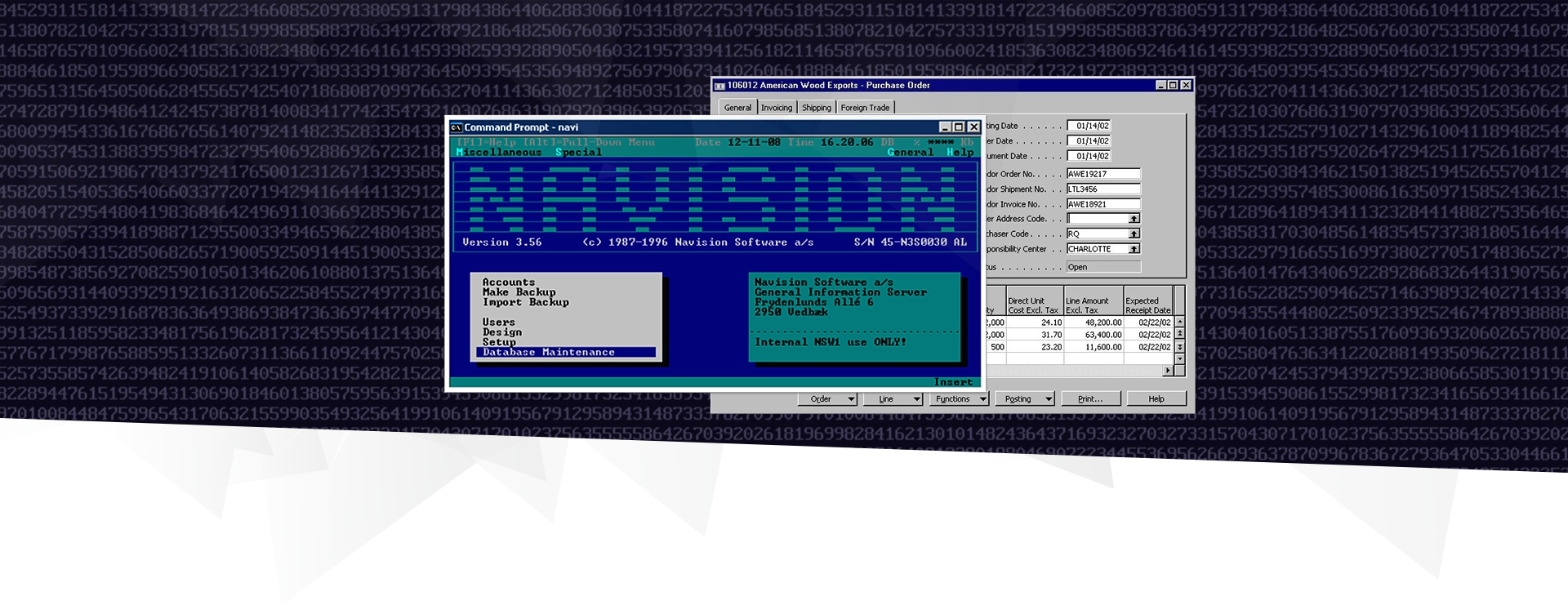Microsoft Dynamics 365 Business Central / Dynamics NAV is a business management system, also known as an ERP system (Enterprise Resource Planning).
With over one million registered users worldwide Business Central / Dynamics NAV today is one of the most widely used ERP applications. From the start, Navision has distinguished itself by being a supple and flexible financial management solution that can be adapted to all companies, regardless of size and industry.
Business Central / Dynamics NAV / Navision has with its origins in Denmark where the solution was developed in the mid-1980s, a long history behind it.
ABOVE you will find information about each solution, from PC Plus, the different versions of Dynamics NAV and up to Business Central.

History
Business Central was first published as Dynamics NAV and Navision, which Microsoft acquired in 2002.
Navision
Navision originated at PC&C A/S (Personal Computing and Consulting), a company founded in Denmark in 1984. PC&C released its first accounting package, PCPlus, in 1985—a single-user application with basic accounting functionality. There followed in 1987 the first version of Navision, a client/server-based accounting application that allowed multiple users to access the system simultaneously. The success of the product prompted the company to rename itself to Navision Software A/S in 1995.
The Navision product sold primarily in Denmark until 1990. From Navision version 3 the product was distributed in other European countries, including Germany and the United Kingdom.
In 1995 the first version of Navision based on Microsoft Windows 95 was released.
In 2000, Navision Software A/S merged with fellow Danish firm Damgaard A/S (founded 1983) to form NavisionDamgard A/S. In 2001 the company changed its name to "Navision A/S".
On July 11, 2002 Microsoft bought Navision A/S to go with its previous acquisition of Great Plains. Navision became a new division at Microsoft, named Microsoft Business Solutions, which also handled Microsoft CRM.
In 2003 Microsoft announced plans to develop an entirely new ERP system (Project Green). But it later decided to continue development of all ERP systems (Dynamics AX, Dynamics NAV, Dynamics GP and Dynamics SL). Microsoft launched all four ERP systems with the same new role-based user-interface, SQL-based reporting and analysis, SharePoint-based portal, Pocket PC-based mobile clients and integration with Microsoft Office.
Dynamics NAV
In September 2005, Microsoft re-branded the product and re-released it as Microsoft Dynamics NAV.
In December 2008, Microsoft released Dynamics NAV 2009, which contains both the original "classic" client, as well as a new .NET Framework-based three-tier GUI called the RoleTailored Client (RTC).
In first quarter of 2014 NAV reached 102,000 current customers.
In 2016, Microsoft announced the creation of Dynamics 365 — a rebranding of the suite of Dynamics ERP and CRM products as a part of a new online-only offering. As a part of this suite, the successor to NAV was codenamed "Madeira".
Dynamics 365 Business Central
In September 2017 at the Directions conference, Microsoft announced the new codename "Tenerife" as the next generation of the Dynamics NAV product. This replaced codename "Madeira".
On April 2, 2018, Business Central was released publicly and plans for semi-annual releases were announced.
Business Central introduced a new AL language for development and translated the codebase from Dynamics NAV (C/AL).


